How to Use NFTs to Grow and Fund Your Small Business?
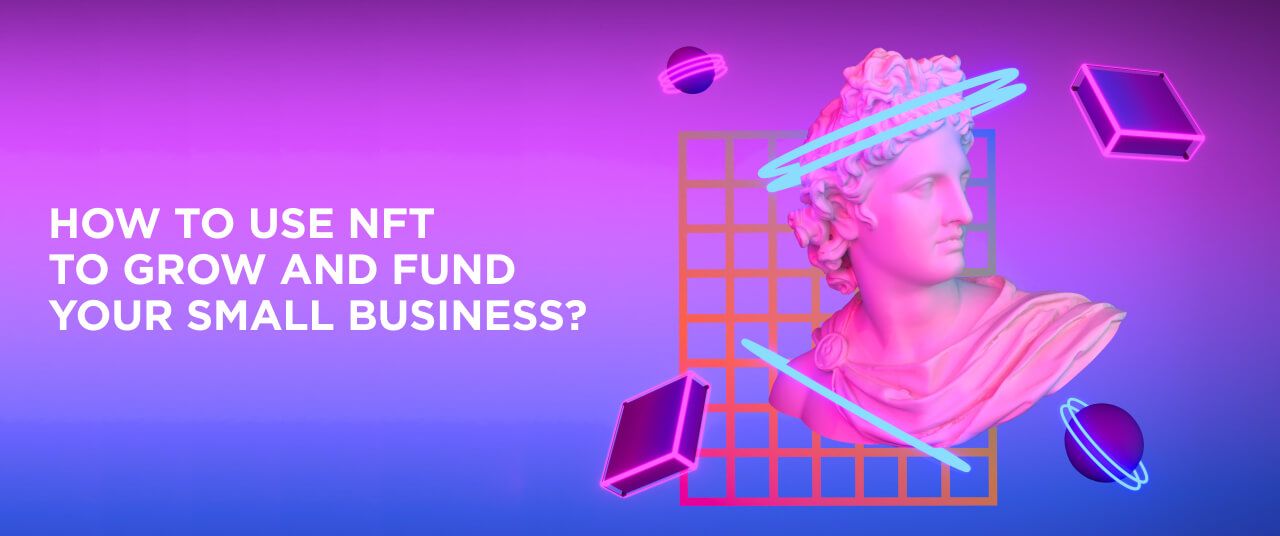
NFT, or non-fungible token, has become the tech buzz of 2021 and quickly transformed from something obscure and geeky to a desirable item of digital consumption.
The hype kicked off when Beeple, an American digital artist and graphic designer, sold the first NFT-based artwork for $69 million in March 2021. Since then, the NFT industry has grown exponentially. According to the Lufthansa Innovation Hub study, venture funding for NFT startups increased nearly 40 times from 2020 to 2021, reaching $4.5 billion. And in early 2022, the amount of funding has already exceeded the annual funding volume from 2017 to 2020.
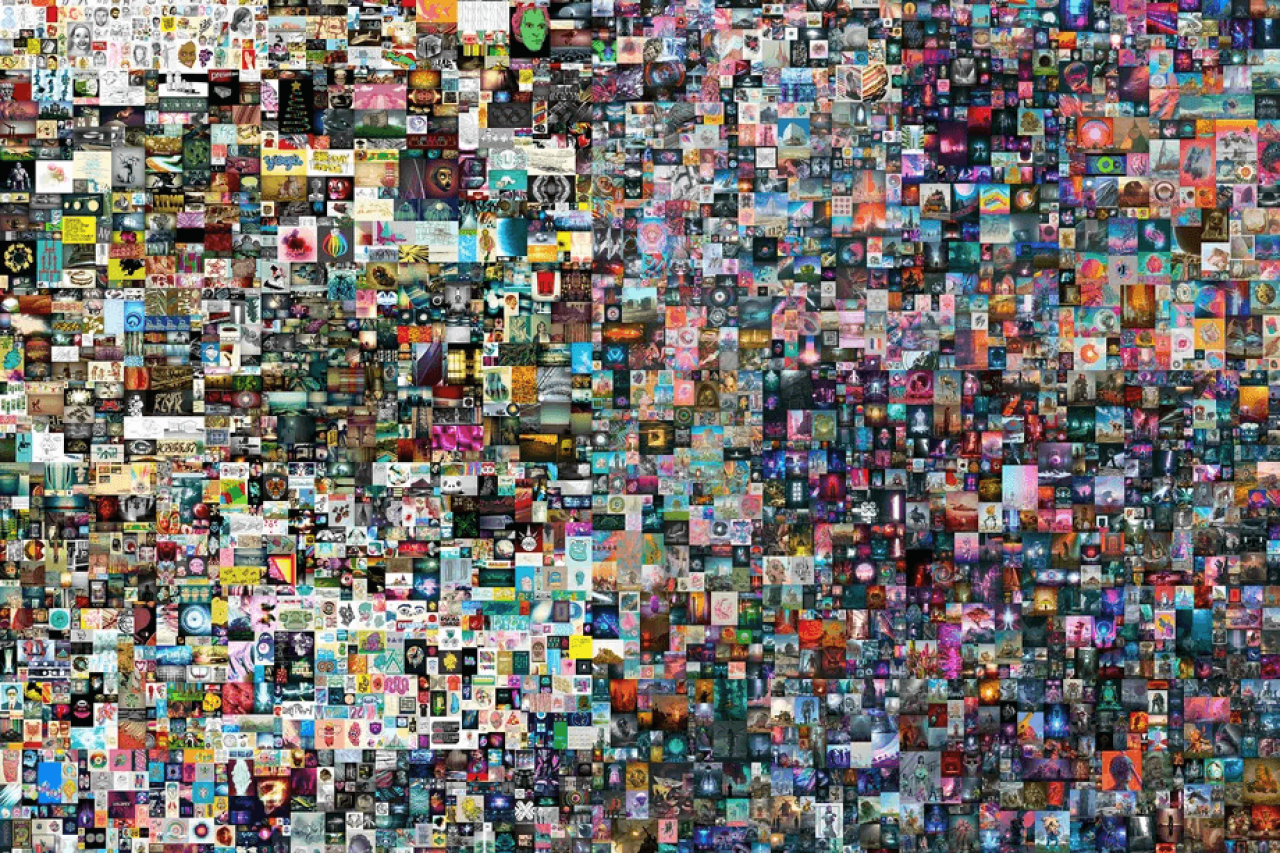
Beeple’s collage, Everydays: The First 5000 Days, sold at Christie’s. Image: Beeple
Many articles about NFT’s capabilities focus on its relevance to digital collectibles, games, and the art space. But does it have more potential? In this article, we’ll take a look at examples of using NFT technology to improve your business.
Let’s dive deeper!
Here’s What We’ll Cover
What Are NFTs for, and Isn’t It a Scam? (Skip This if You Already Know It)
NFTs, or non-fungible tokens, are cryptographic assets on blockchain with unique identification codes and metadata that distinguish them from each other. In a nutshell, using cryptography, you can take any set of data, like a picture, music, movie, or something else, and make a unique token based on it. This token will represent the initial file. Then this token can be handled in the same way as property: bought, sold, given away, etc. Specifically, they’re secured by the Ethereum blockchain – no one can modify the record of ownership or copy/paste a new NFT into existence.
While NFTs have been around since 2014, they have gained widespread buzz just now. Since November 2017, $174 million has been spent on NFTs.
NFTs are usually one-of-a-kind or limited edition, and have unique identification codes. But many of the early NFTs were digital creations that already existed in some form elsewhere, such as iconic video clips from NBA games. Anyone can watch them for free online.
So why are people ready to spend millions on something they can easily screenshot or download?
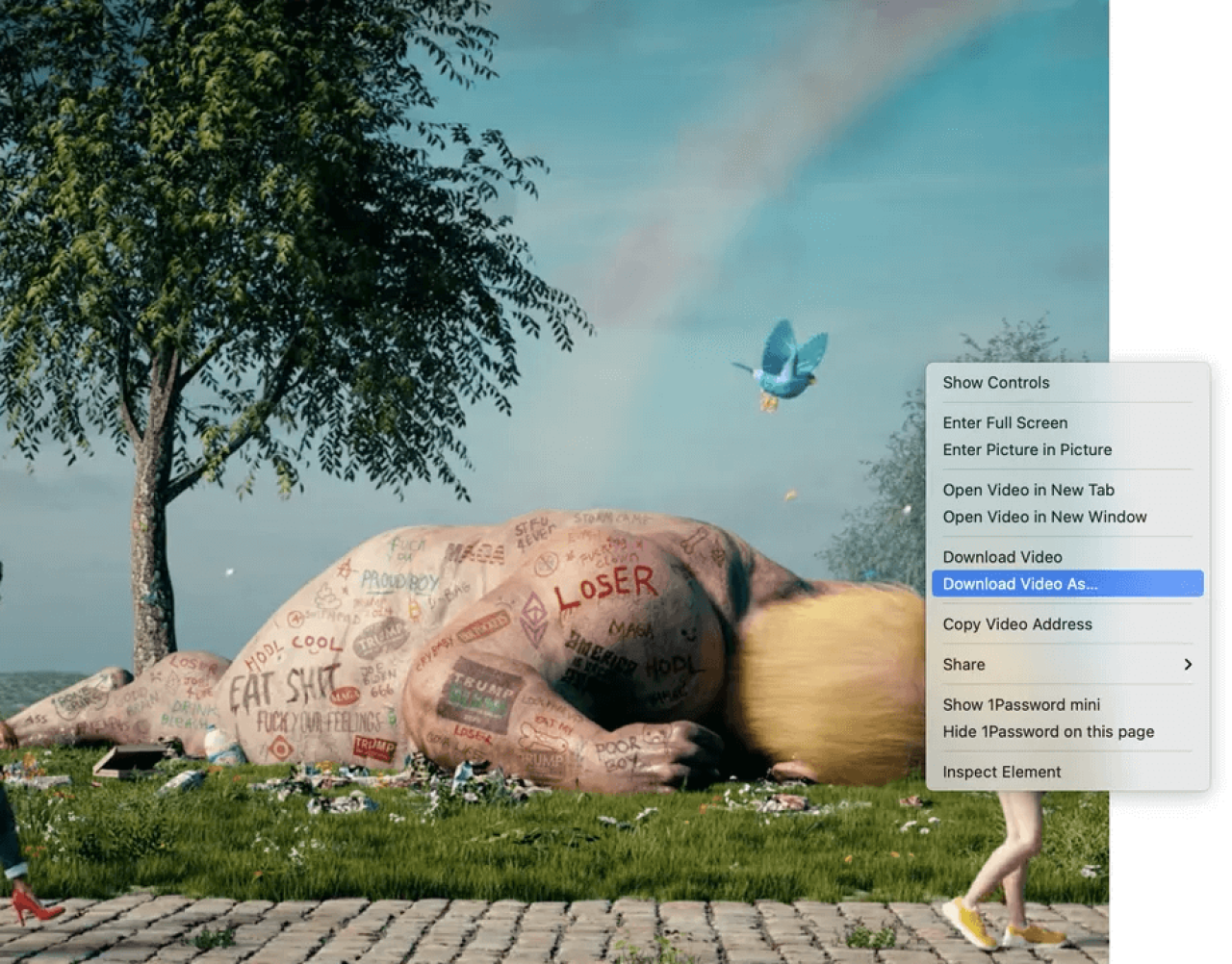
NFTs provide you something that can’t be copied: ownership of the work. What’s more, it contains built-in authentication that serves as proof of ownership. Collectors value these “digital bragging rights” almost more than the item itself.
In the case of art collecting: anyone can buy a Monet etching, but only one can own an original.
Why Do Companies Use NFTs?
NFTs are used to ensure that files are protected from copying and unauthorized use in the same way that we protect property. For example, it is possible to license movies, books, music, and other intellectual assets.
Let’s say, a movie company has directed a film and sells tokens to theaters to reproduce it. This equates to distributing physical reels of film. Artists can bid on original artworks, as long as the work exists only in digital form. Game developers can sell skins, textures, and other digital assets. Or one may register the property rights to physical world objects: real estate, cars, art objects.
While NFTs may not result in an immediate return on investment, they can have a significant impact on gaining conversions and sales. NFTs provide businesses with the following benefits:
- Create new and unique brand experiences. NFTs can become a part of your brand storytelling, breathing life into it via something tangible that customers can own.
- Increase brand awareness and loyalty. NFT can generate awareness of the brand, loyalty, and advocacy. For instance, during the NFT obsession in March 2021, brands such as Taco Bell, Twitter, and Pringles released their NFTs, hit headlines and made their mark in countless discussions about the booming technology.
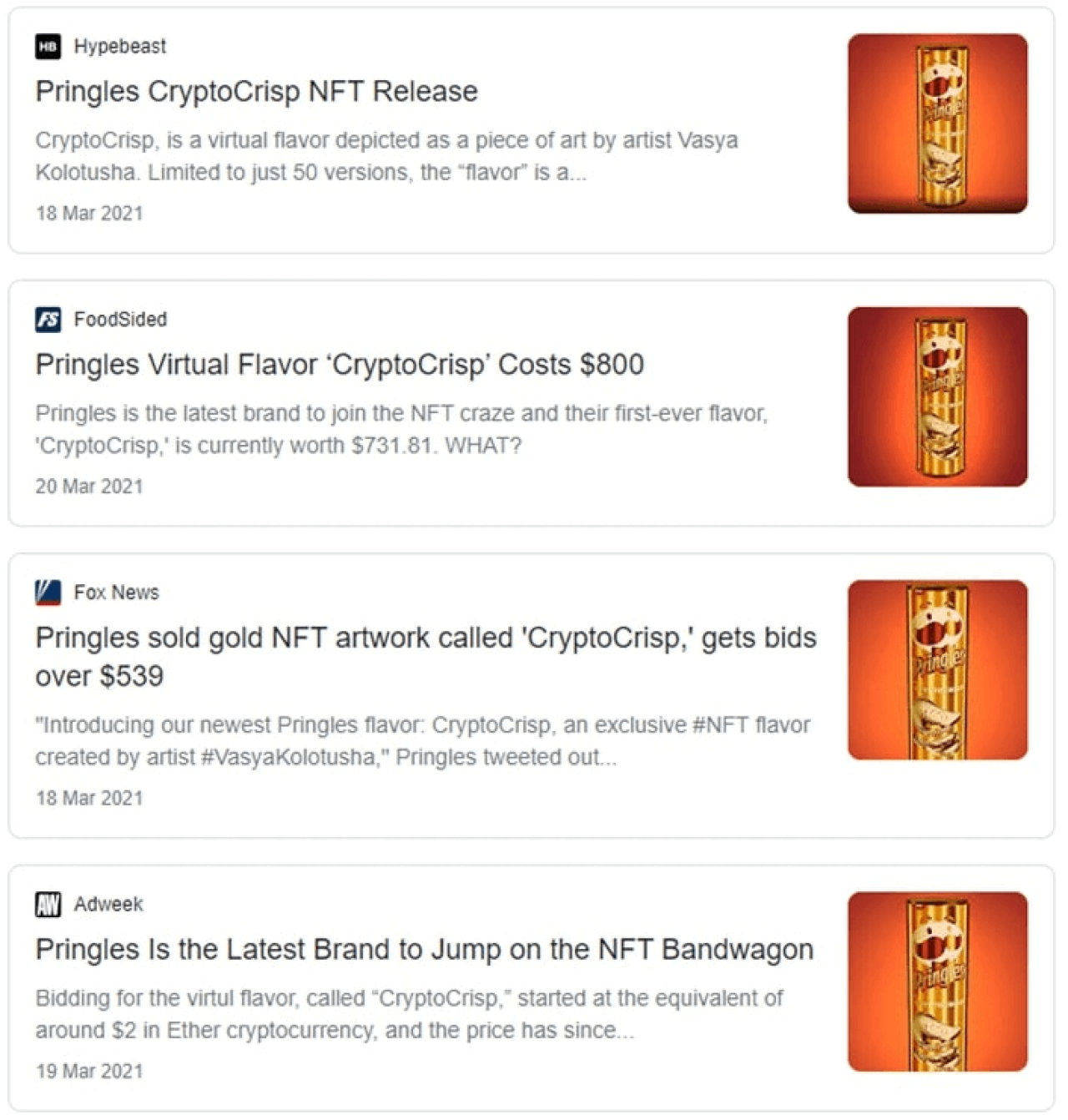
- Encourage follower interaction and community building. A great idea to boost interest in your project is rewarding your early adopters. This builds trust in your community and allows you to add more value in advance. For example, you can award badges or NFTs to persons who appeared before anyone else. The best way to do it is to use the Proof of Attendance Protocol (POAP).
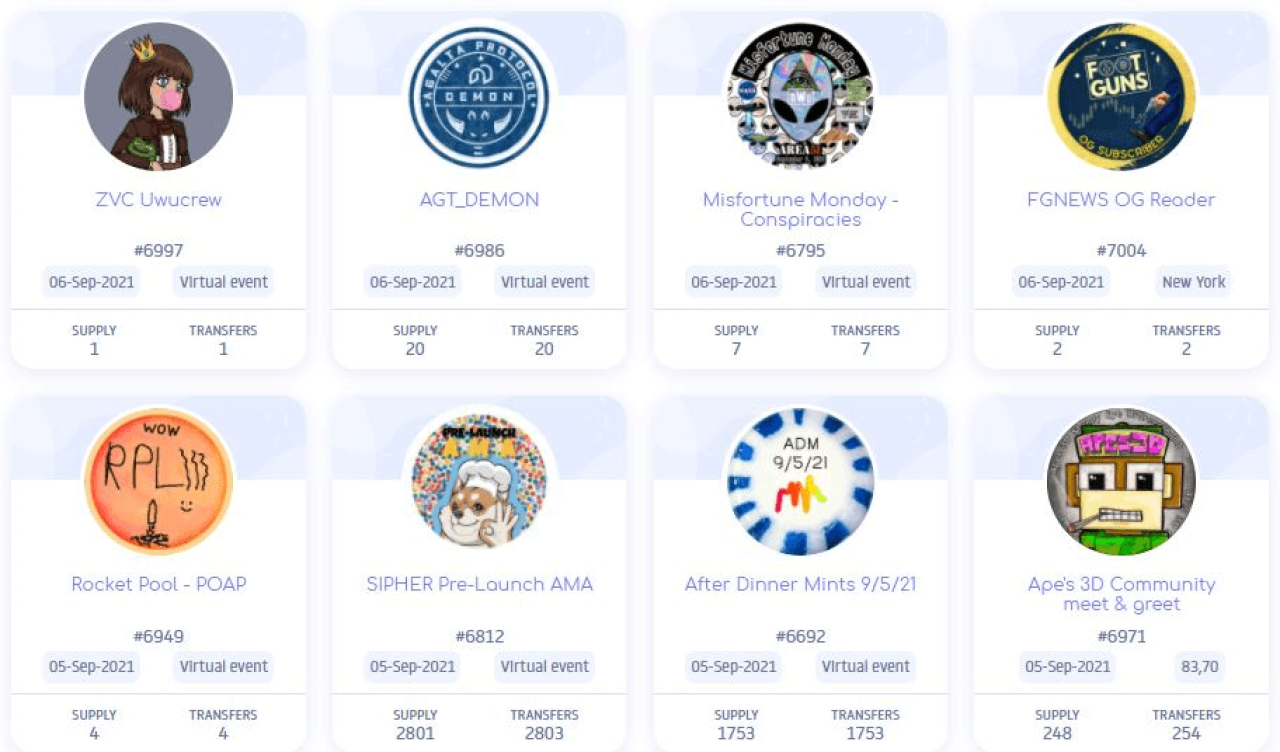
- Boost interest in your brand, services, or products. It’s crucial to be authentic. For example, you can use your social media to tell people why you started this project and introduce the team behind the product. Also, you can collaborate with influencers, other projects, and even artists. For example, when Adidas announced its NFTs, it collaborated with some leading NFT projects and influencers on the scene to create buzz and increase audience reach.
- Provide users with safe investment. NFTs are relatively safe investments. The risk profile of NFTs differs from that of other asset classes. So, by adding NFTs to your investment portfolio, you can improve its performance. Essentially, it means achieving a better balance between risk and return.
- Reducing security risks in the NFT ecosystem due to blockchain. All NFTs have clear records of authenticity and chain of ownership, which prevents them from being mishandled and stolen. Once data has been added to the chain, it cannot be changed or deleted. This means each NFT authenticity is preserved, which increases the confidence level.
- Serve as the gateway to a Metaverse. Metaverse allows users to buy virtual homes and clothing or build a complete lifestyle in virtual worlds. An increasing number of people will spend time in virtual reality, which will require the use of unique assets, such as NFTs. And this is a potential opportunity for SMBs to benefit from the NFT.
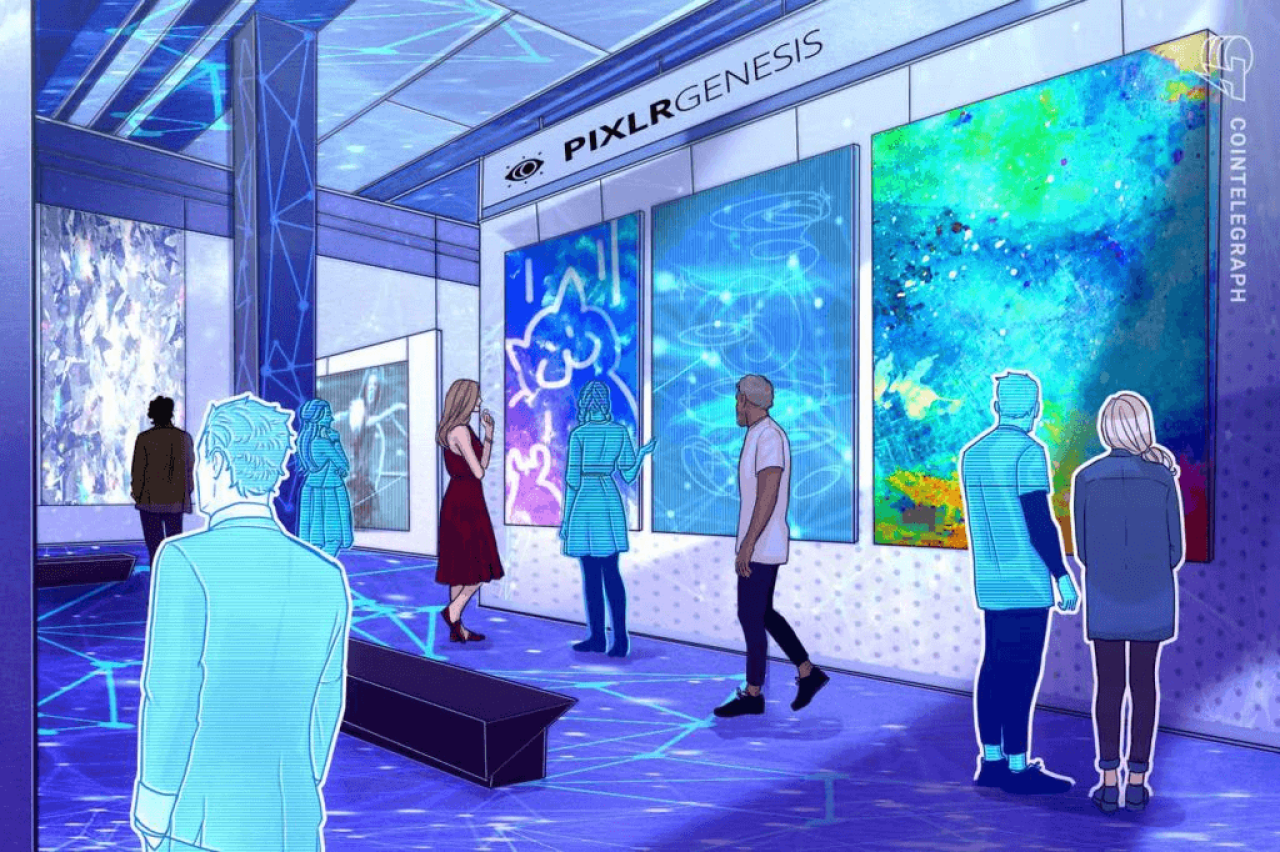
Metaverse Art Museum
NFT Best Practices and Ideas to Go Viral
Now let’s take a look at some examples of NFT use in business.
NFTs in the Art Industry
The main issue of the art industry is the high fee charged on each transaction made in an auction house. Also, the art trade is limited and available to a few groups of artists. Therefore, many artists are being overlooked. In addition, it is challenging to organize an exhibition for novice artists in the traditional way.
NFTs are able to change this tendency. Artists can now deal directly with buyers, but more significantly, they can retain intellectual ownership of each artwork, which can provide ongoing income from the resale. The opportunities that NFTs offer artists related to ownership are great. For example, artists can now directly receive regular royalties on works of art or music pieces as the asset passes from one buyer to another.
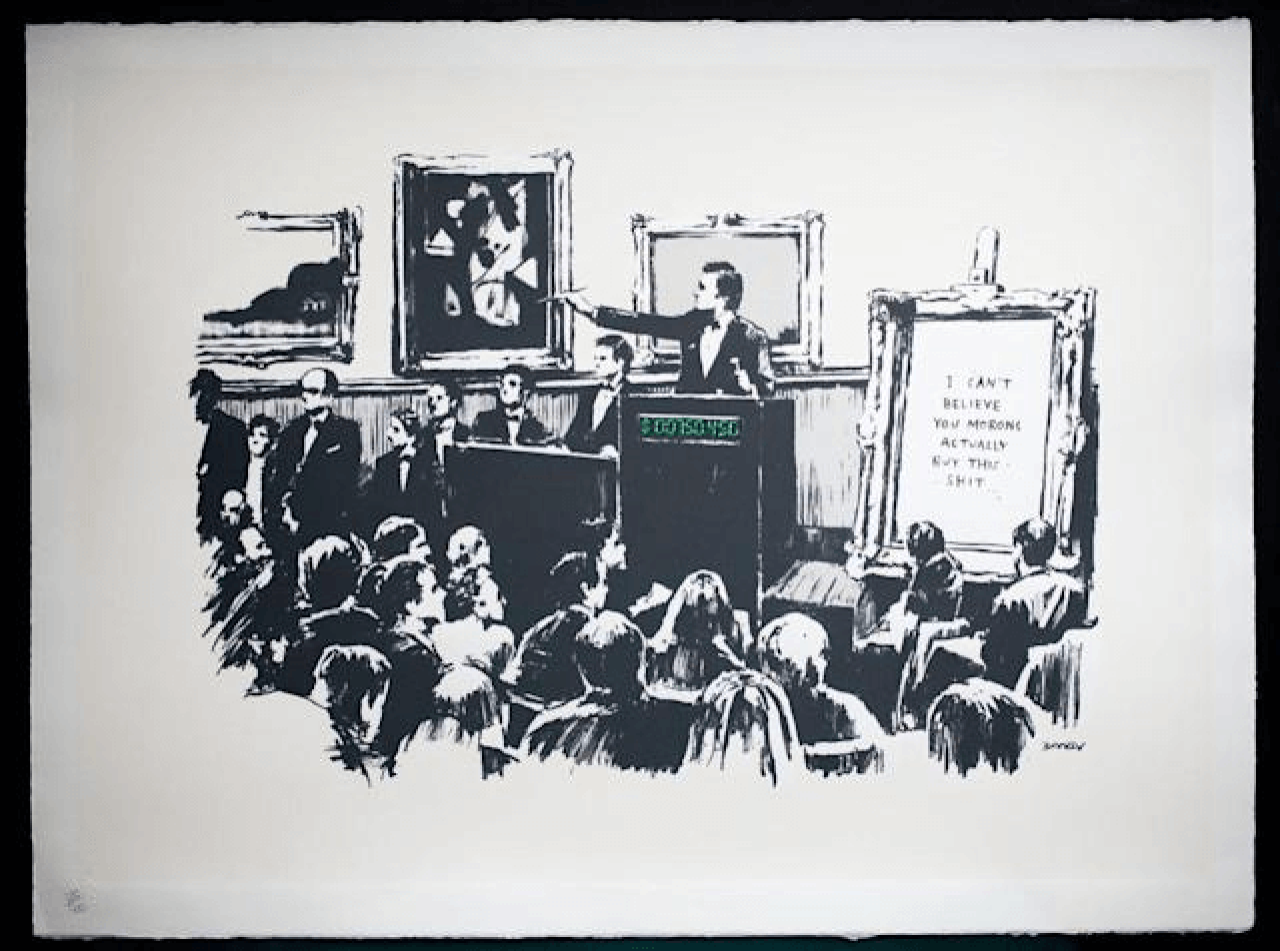
Banksy’s art burned for resale as NFT
NFTs for Gaming
Many games have created a virtual economy by adding in-game purchases, essentially tokenizing in-game assets such as shields or skins. NFTs offer the gaming industry the ability to allow users to keep the assets they purchased within the games. Currently, when a user leaves a game, the money/investments and assets purchased in-game are lost.
With NFTs, game developers could receive royalties every time an item is resold on the open market. This would create a more mutually beneficial business model in which both players and developers earn on the secondary NFT market.
For example, Decentraland, a virtual reality game, allows players to buy NFTs, which are virtual plots of land that they can use whenever they want.

NFTs for Internet of Things (IoT)
A significant part of the IoT activity involves the exchange of data between machines. In this space, NFTs could enable machines to authenticate data sent by other machines in a more convenient and transparent way. This is another option to make communication between devices in the digital space more secure.
Cybersecurity companies such as WISeKey already use NFTs to certify the reliability of devices.
NFTs for Healthcare
Today, the healthcare industry owns and controls how and with whom data is shared and even resold. As healthcare becomes more digital, NFTs can play a crucial role in enabling tokenization of personal health data. Using healthcare NFTs, people could choose what data they share or sell, and track how and by whom that data is used.
NFT and Real Estate Market
NFT real estate can be either physical real estate in the real world or digital areas within the Metaverse. Virtual NFT real estate can be anything from land plots to buildings that exist only within a specific Metaworld or game.
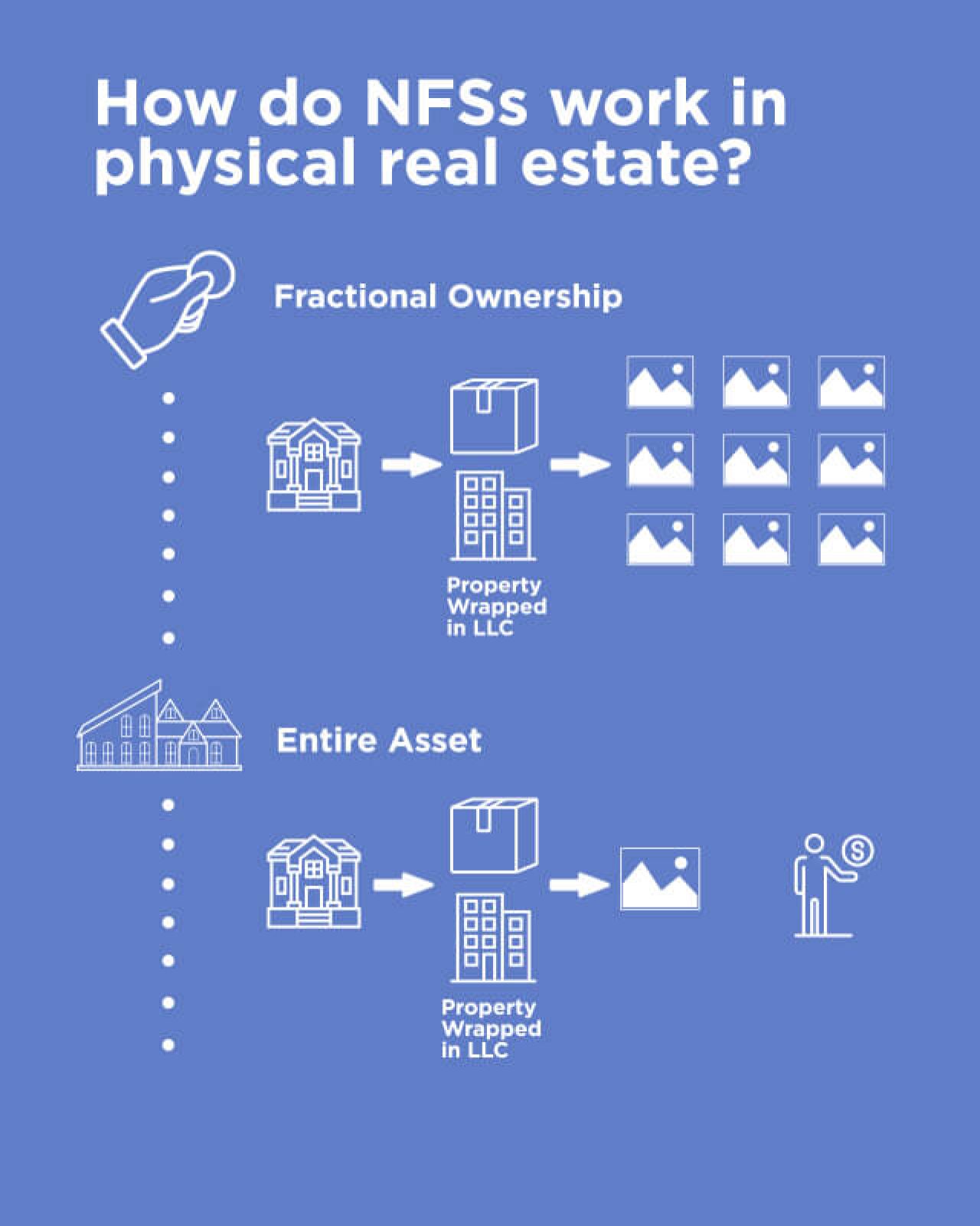
Physical real estate can be tokenized and represented as NFT. But this requires more structuring. For instance, according to current U.S. regulations, documents cannot be attached to NFTs. Also, NFT real estate can be used as collateral for NFT loans in the future.
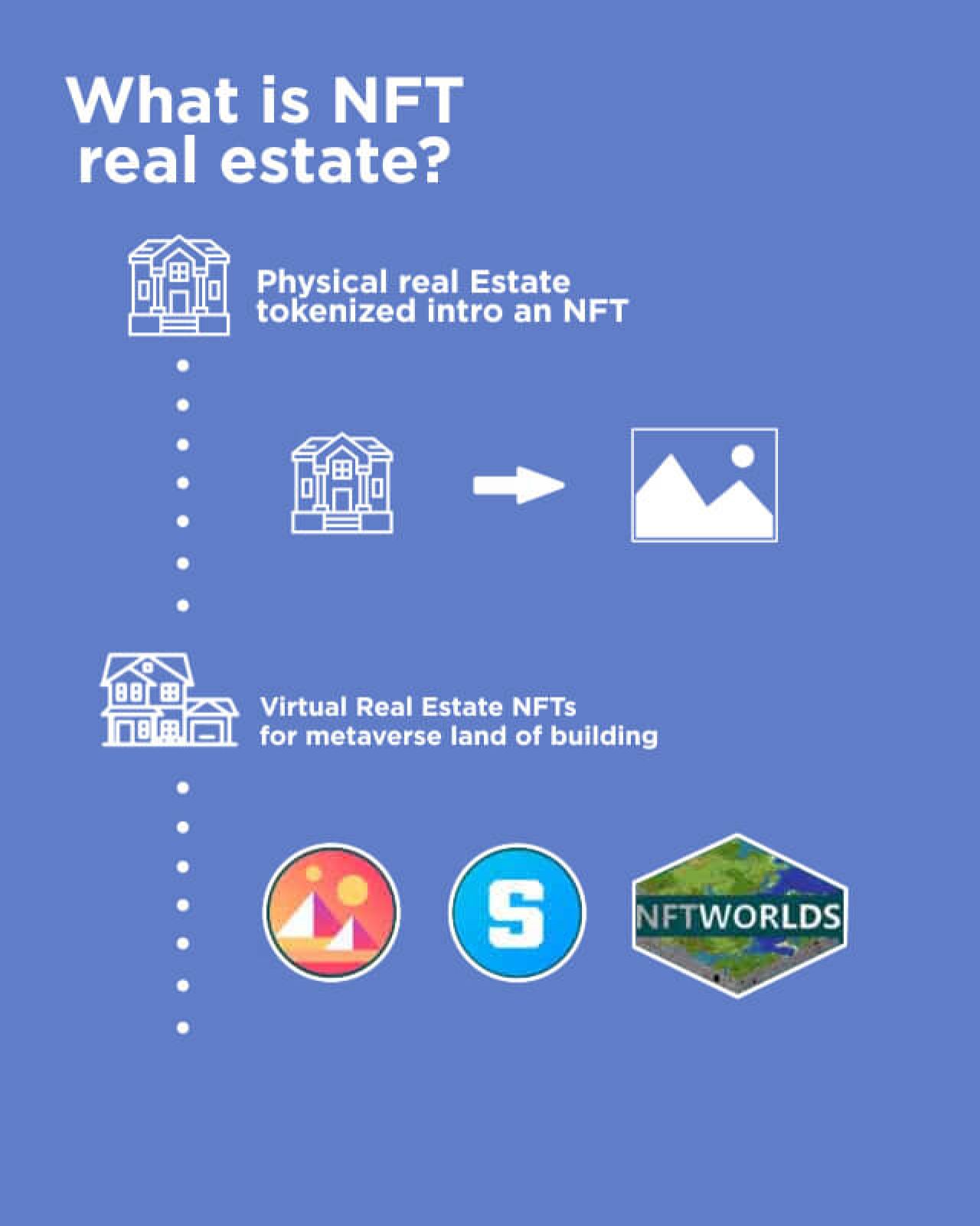
The first successful sale of a US-based house as an NFT was announced in February 2022. Leslie Alessandra sold her home in Gulfport for $650,000.

NFTs for Sports, and Athletic
Deloitte predicts the sports market will generate more than $2 billion in NFT sales this year. Early collectors, sports stars, and even the leagues stand to gain. But how are NFTs boosting the global sports collectibles experience?
Let’s make it clear. NFTs have gained a lot of attention in high-profile sports categories such as basketball, baseball, football, etc. They are used in the form of memorabilia, trading cards, sports kits, digital collectibles, and even in ticket sales.
NFTs expand the opportunities to own and share these special moments as digital sports memorabilia and provide new options for establishing long-term emotional connections between athletes and fans.
Teams and ticket sellers are also involved in this process, turning tickets into NFTs. In a short time, your digital ticket stub could serve as a video of the game you attended. Just think, perhaps the digital ticket will include exclusive content that someone would be willing to pay $1 million for.
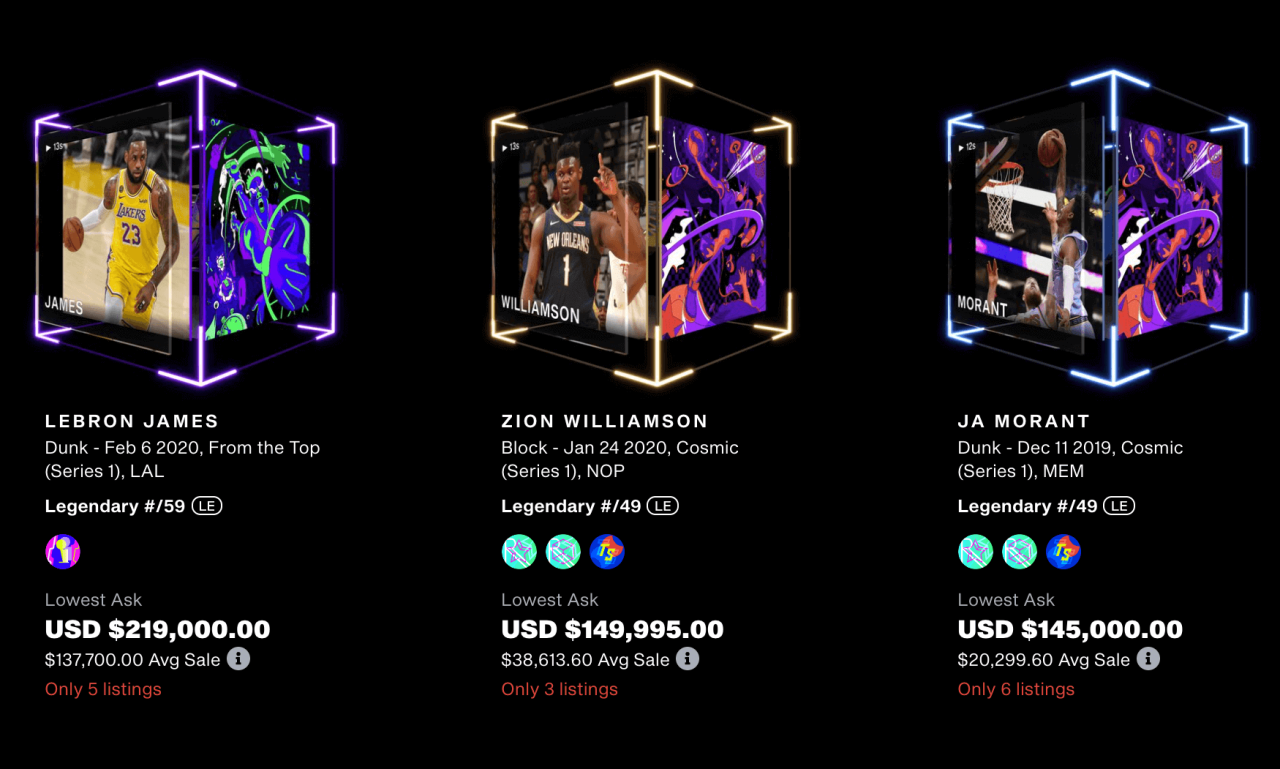
NFTs for Domain Names
Domain names often fall victim to the so-called “drop catching” where people track down the domains they want and buy them at the moment the registration ends. While technically not a crime, “drop catching” can lead to the financial ruin of businesses. For small businesses without the financial resources to repurchase a domain or the legal resources to avoid URL drop catching, the results can be dramatic. That is why, as soon as the technology of real “ownership” of digital things appeared, the tokenization of domains became a must.
An NFT domain is a unique domain represented by a single non-fungible token (NFT). And it offers many advantages over traditional ones. For example, the NFT domain can function as a cryptocurrency public address. In a nutshell, it can send and receive other compatible cryptocurrencies and tokens as payment.

In addition, they are usually purchased at a one-time fee, unlike traditional domain business models, which are based on annual renewal fees. This means that NFT domains are 100% owned by individuals. Thus, a global organization such as GoDaddy or Google Domains cannot censor your domain or take it away at their will.
NFTs for Identification, Certification, and Documentation
NFTs contain a code with a unique set of data and can be applied to tokenization of documents such as degrees, academic certificates, licenses, medical records, or birth and death certificates. An identity card or certificate can be issued directly through a blockchain in the form of an NFT, which can identify the owner. Thus, using NFTs to store or protect personal data can help users prevent identity theft.
The system is gaining momentum. For example, one of the successful applications is the NFT-based vaccination passports issued by the Republic of San Marino for persons who have been vaccinated.
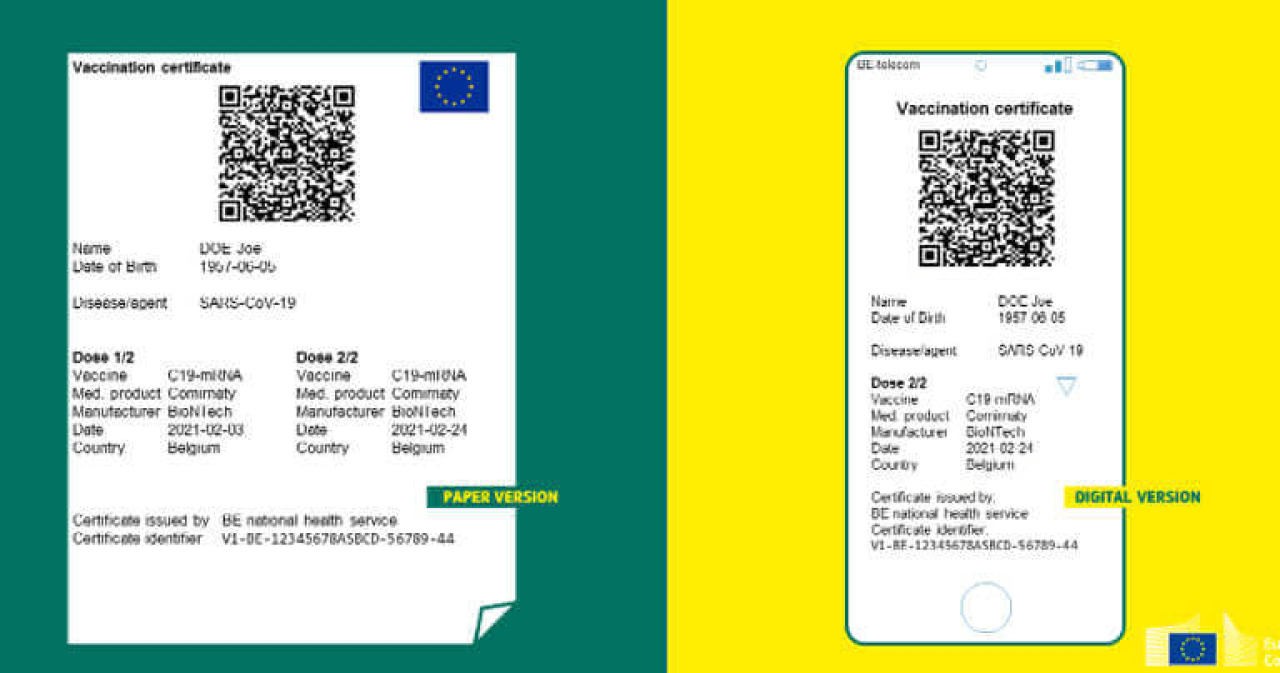
NFTs and Insurance Industry
House or car insurance is widespread, but what about insurance for non-fungible tokens?
NFT insurance will protect your blockchain-enabled digital assets from theft, hacking, or any other malicious attack. The NFT insurance market is still in the early stage, and there is no policy to ensure non-fungible tokens. NFT owners can only rely on blockchain and cold and hot wallets to protect their property.
In the future, insurance companies will definitely create products to protect their customers’ NFT investments from theft and attacks.
NFTs for Event Tickets
Let’s first look at the main problems with the traditional ticketing system.
For example, ticket bots enable users to buy tickets in bulk and resell them at high prices. Besides, the lack of an exchange protocol allows for fraud in the secondary market. Once a ticket is resold, event organizers don’t know who will eventually come to their event.
Also, guests can’t be sure whether they paid for a real or fake ticket, as many sites pretend to be legal ticket agents. This leads to a loss of money and disappointment.
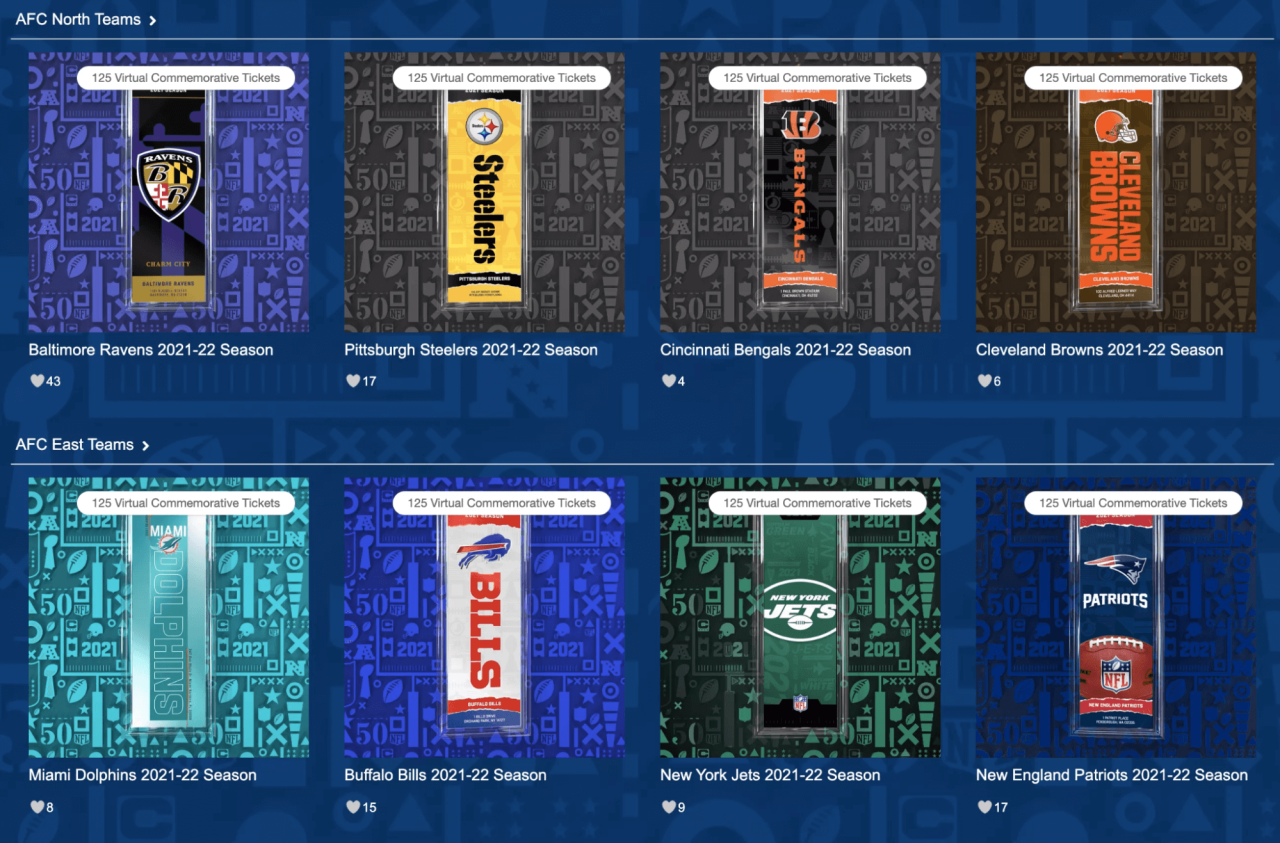
So, how does NFT for ticketing work? In a ticketing system, event organizers can code NFTs to set the selling price or run the sale as an auction where people can bid on tickets.
The customer purchases NFT-based tickets directly from the ticketing company. When payment is received, a smart contract is triggered and the ticketing database sends the NFT ticket to the buyer. The sales company requests that the ticket be uploaded to the IPFS. The IPFS computes a hash, and the tickets are stored in the database. NFT tickets are created and uploaded to the requested NFT marketplace.
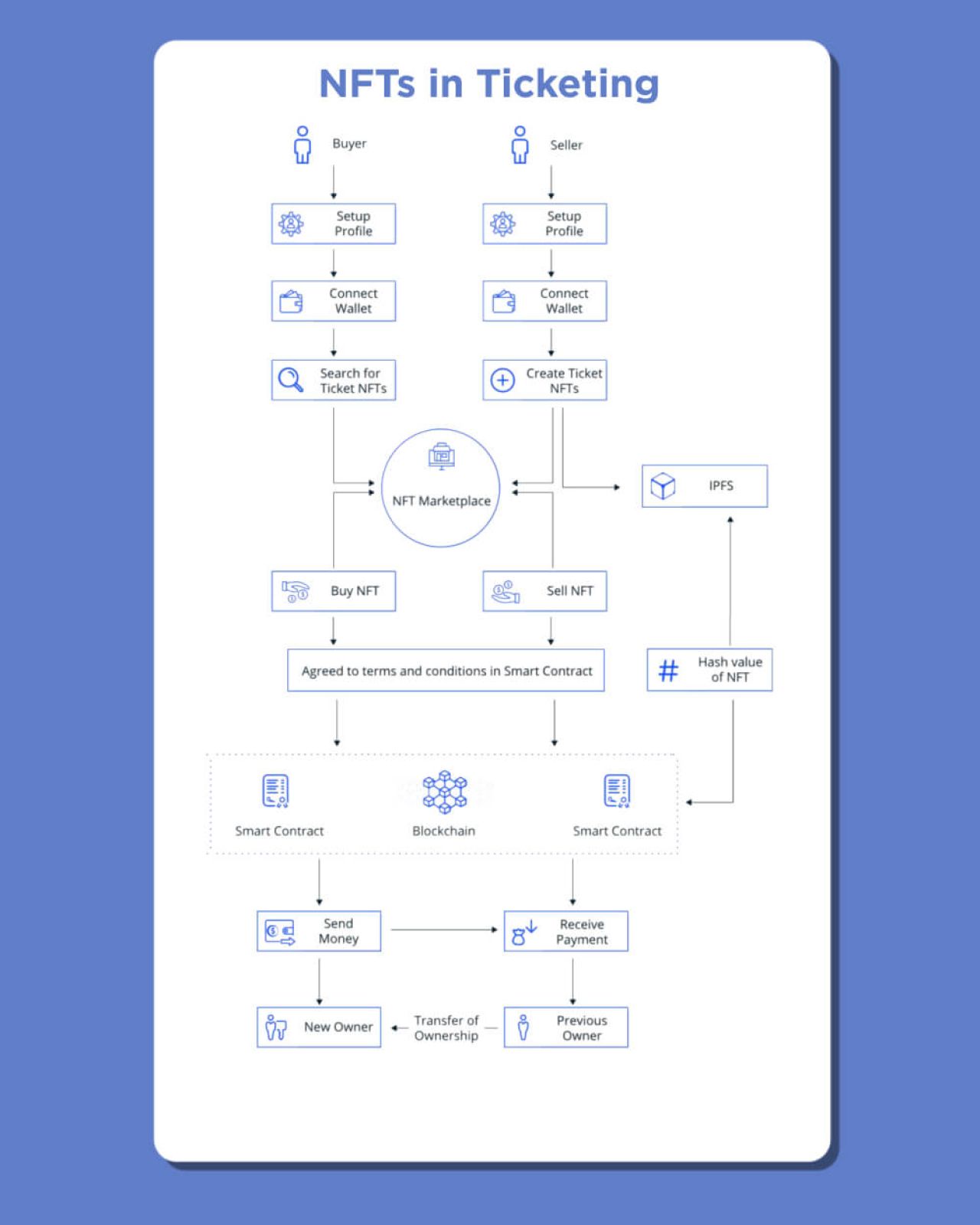
Also, ticket holders can resell NFT tickets on the NFT trading floor. The ticket is stored in a smart contract. Once a buyer purchases a ticket from a ticket holder, the smart contract is triggered and payment is automatically sent to the seller.
NFT for Reliable Fundraising
If you require additional funds for your startup, you might start an NFT campaign as a cost-effective alternative to bank loans. This is a safe and straightforward crowdfunding option: you can specify conditions in the NFT. For example, you can note that the NFT entitles recipients to receive dividends or the right of ownership in the business.
Moreover, NFTs are a superb tool for charity and social projects. For example, designed by Brazilian Impact Women NFT will raise funds for non-profit organizations to take a stand against women’s abuse on all levels.
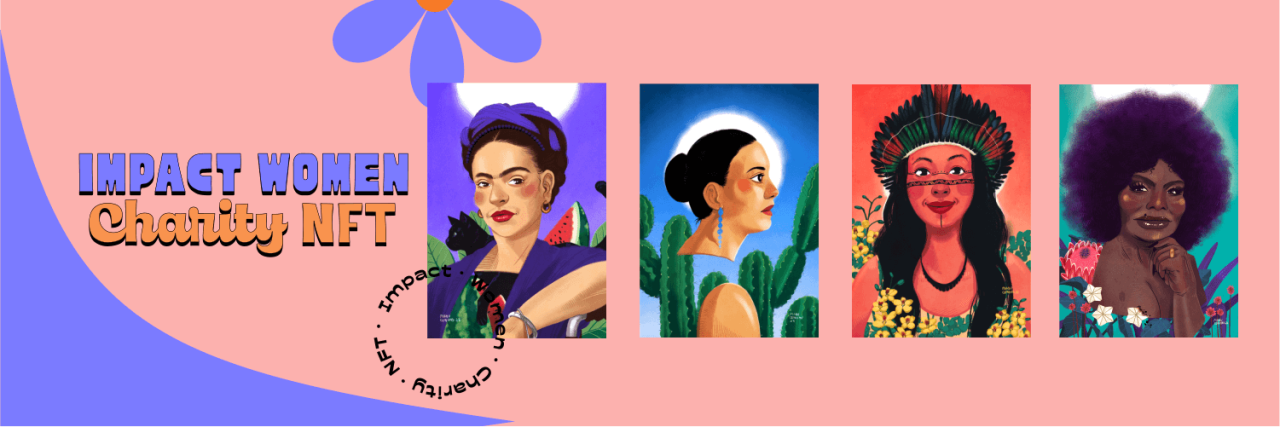
Non-Fungible Tokens for the Supply Chain
The core function of NFTs in logistics is to ensure goods authenticity. Since NFTs have an unchanging and transparent nature, the authenticity and reliability of data in the supply chain will be maintained. For example, in the food and other perishable industries, it is crucial to know where and how long a product has been.
NFTs eliminate fakes, help track the flow of goods through the supply chain and guarantee their authenticity. For businesses such as the car industry, NFTs can also provide details about each material or component in a particular item. This may help with expense tracking.
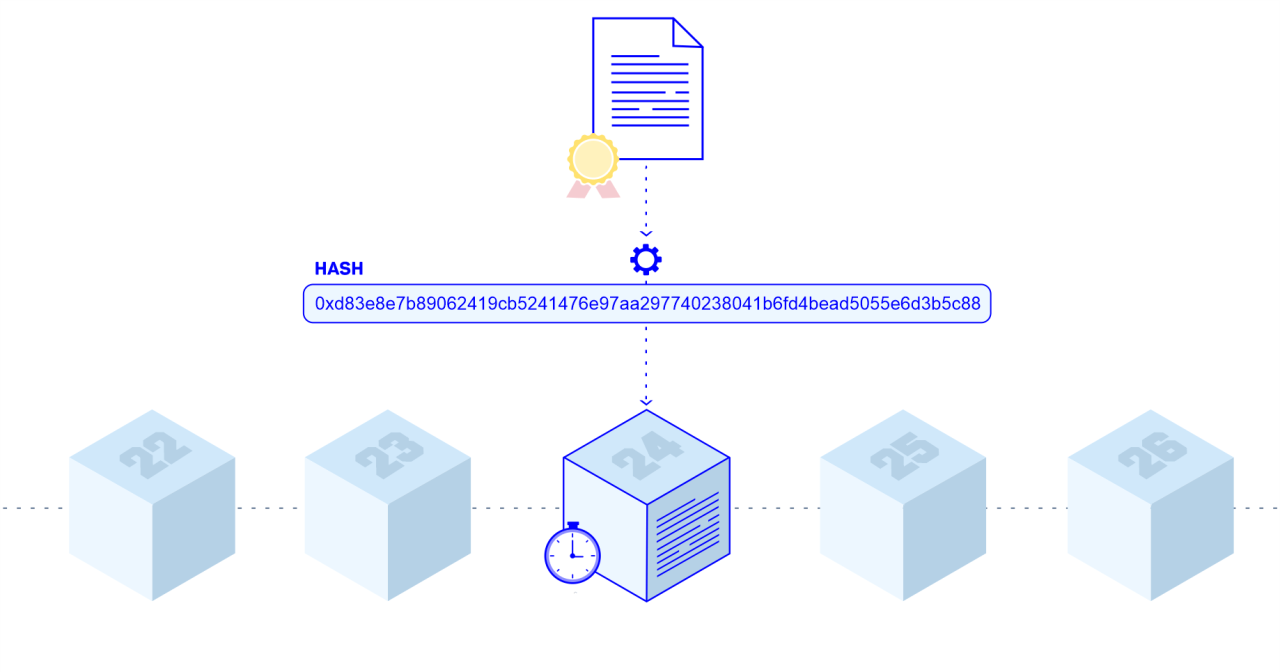
NFT Projects in the Fashion and Beauty Industry
The fashion industry has always set the latest trends, and NFTs are no exception: 17% of brands featured in the Vogue Business Index have already worked with NFTs in some capacity.
The first listed sale of a fashion NFT was a rainbow dress created by The Fabricant and sold for $9,500. The first bidder among luxury brands was Gucci’s Aria film, which was sold at auction for $25,000.
More and more brands have since featured a wide range of NFT designs, including Louis Vuitton, Burberry, Nars, Levi’s, Clinique, Dolce & Gabbana, Gap and Adidas. Balmain, for instance, has released at least four NFT designs and is keeping count.
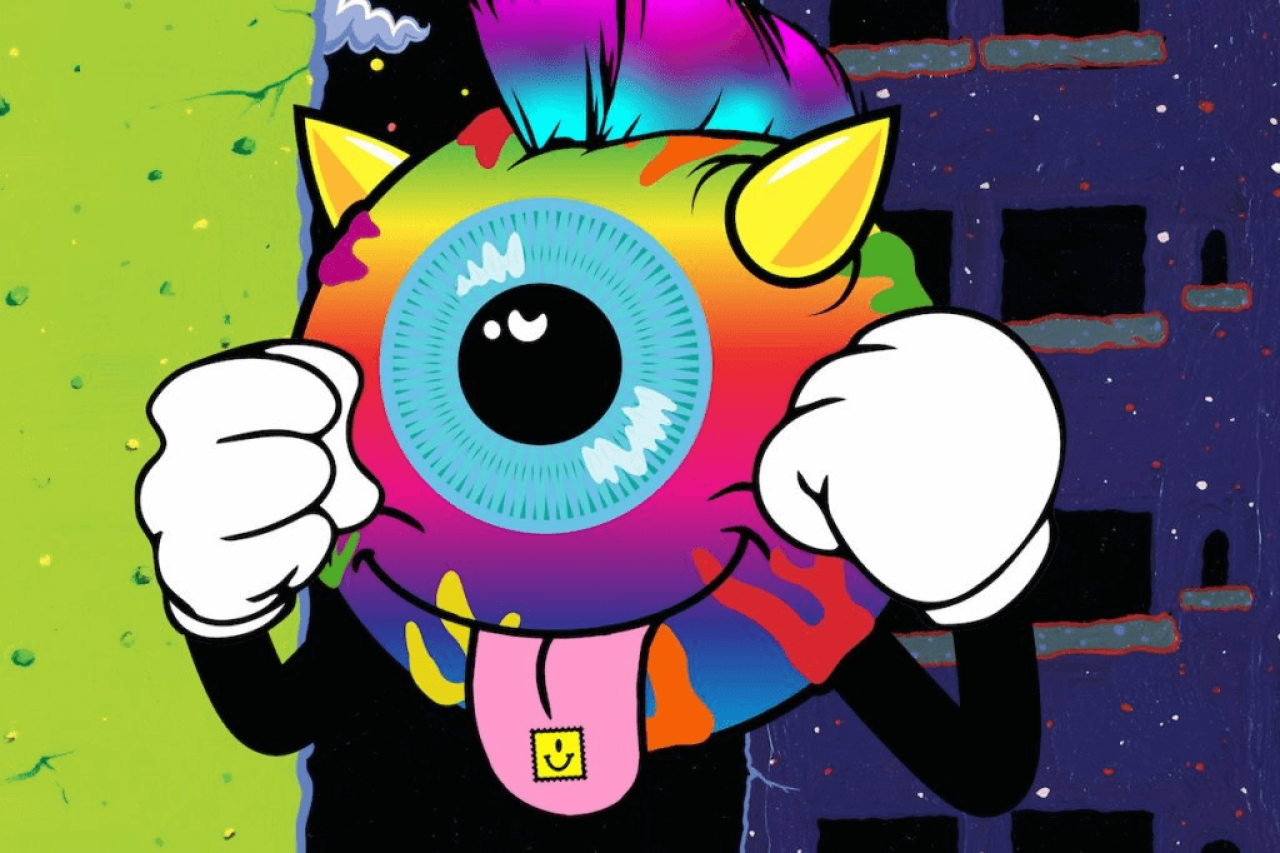
Fashion Brand Mishka launches NFT collectibles, “The Keep Watch Crew”
For example, Dolce & Gabbana debuted its NFT collection, which has physical, digital, and experiential value. Besides the digital item, the NFT holder receives two-year access to D&G couture events in Italy. This way, the NFT encourages the buyer to engage with the brand for two years.
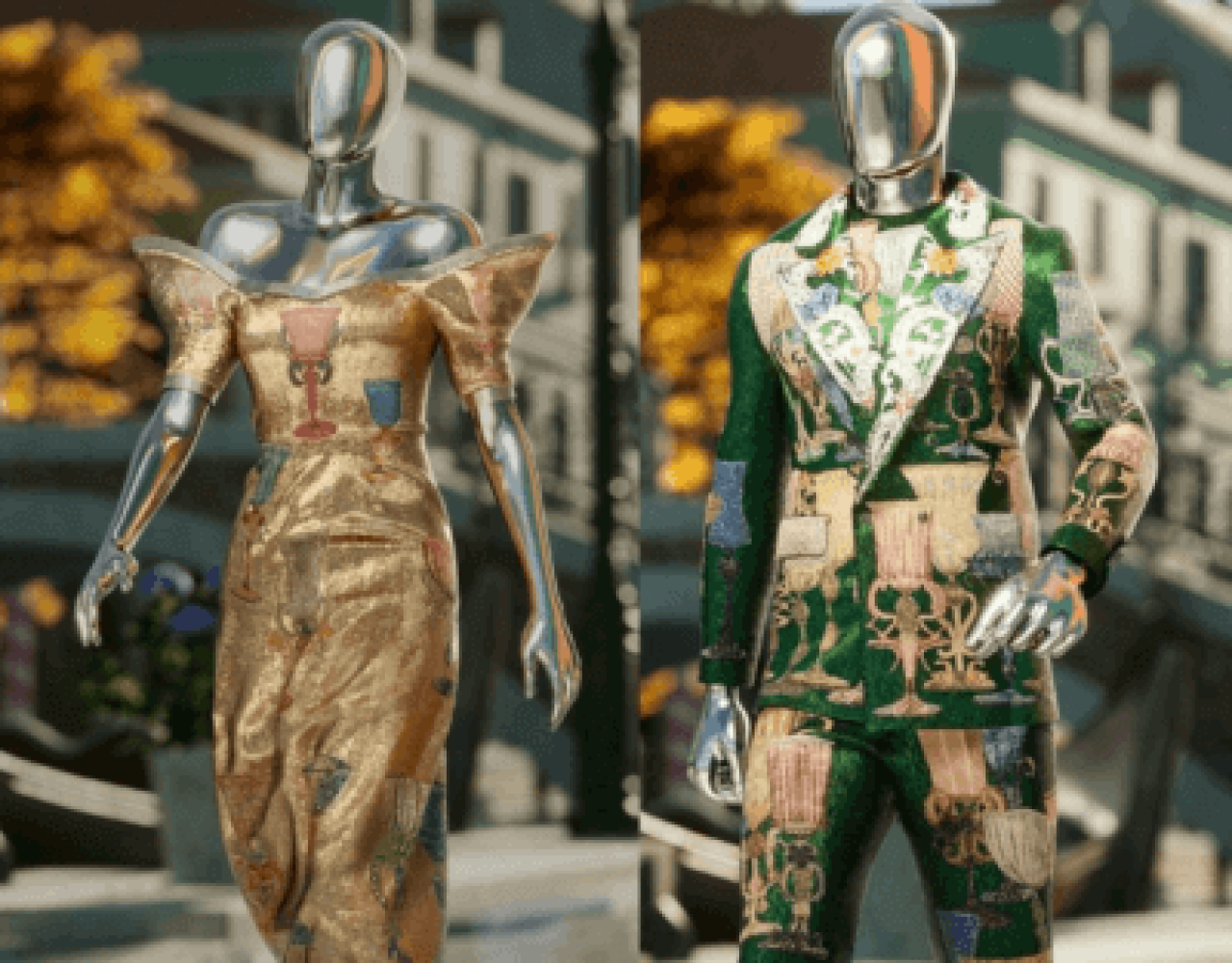
Adidas also made its first NFT drop with GMoney, PUNKS Comic, and Bored Ape Yacht Club. According to Cryptobriefing, 30,000 NFTs at 0.2 ETH or $800 apiece sold out almost instantly and generated over $23 million in revenue.
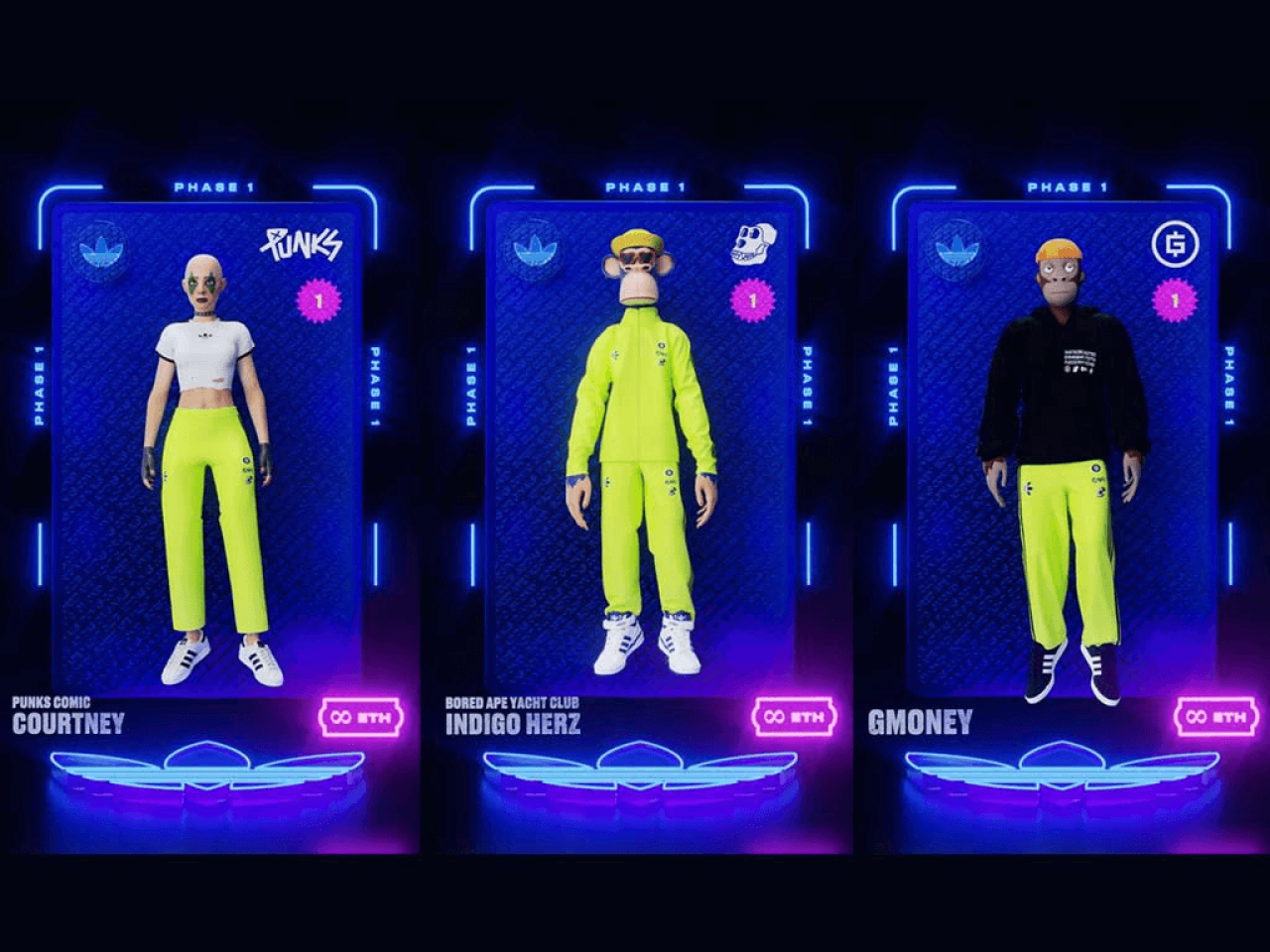
Level Up Your Startup with NFT Adoption
The above are just a few of the many examples of how brands and businesses are using the NFT trend. Non-fungible tokens allow them to discover creative ways to engage their customers, increase brand awareness, and create additional sources of revenue.
If you are planning to launch an NFT project or apply this technology in your business, but you are not sure where to start, do not hesitate to contact us. We will be glad to explain to you in detail the advantages of NFT technology and answer all your questions.




